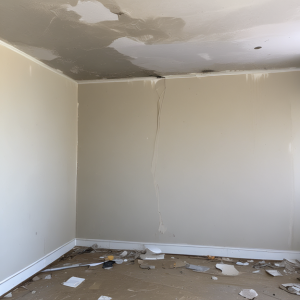Hey there! You know, the other day I was chatting with a neighbor over coffee, and we got into this whole conversation about water leaks. It’s one of those things you don’t really think about until it happens to you, and then it’s a nightmare. So, I thought it might be helpful to share some tips on how to spot water leaks lurking behind your walls before they turn into a big problem.
Why Water Leaks Are a Big Deal
Because, water leaks aren’t just annoying, they can really cause some serious damage. If you think about it. Moisture can mess with your home’s structure, encourage mold growth, and cost you a ton of money in repairs. Let’s break it down.
Structural Damage
Water and your home’s structure just don’t mix. Here’s what can happen.
• Sagging Walls and waterlogged drywall ceilings can sag or even collapse if it gets bad enough.
• Water can seep into the foundation, leading to cracks and instability.
• Wooden floors can warp, buckle, or rot when exposed to water over time.
Mold Growth
And then there’s mold. Yuck! It loves damp, dark places, and a hidden water leak is like a VIP invitation.
- Respiratory problems and allergies. Mold can cause all kinds of health issues,
- Mold smells musty and can make your whole house stink.
- Black mold can ruin furniture, clothes, and other personal items especially if it spreads.
Financial Costs
- But let’s not forget the money. Water leaks can be expensive.
- Fixing structural damage and getting rid of mold isn’t cheap.
- But even a small leak can make your water bill skyrocket.
Some insurance policies won’t cover damage from long-term leaks, which can leave you footing the bill.
Spotting Water Leaks Early
But how do you catch these leaks before they wreak havoc? There are a few tell tale signs you can watch for.
Visible Signs
Look for yellow or brown stains. They often mean water’s been leaking for a while. If you see paint or wallpaper bubbling and peeling, it could be due to moisture. Warping or bulging walls are often a sign of water damage.
Auditory Signs
Listen for the sound of water dripping or running, especially at night when everything is quiet. These noises can indicate a plumbing issue behind the wall.
Odor Indicators
A persistent musty odor is usually a sign that mold is growing somewhere hidden.
Also, touch your walls and ceilings occasionally to check for dampness or moisture.
Using Technology
Moisture meters can measure moisture levels in your walls. Infrared cameras use thermal imaging and can help you spot temperature differences caused by water leaks.
Dealing with Water Leaks
Found a leak? Don’t panic. Here’s what you need to do.
Find the Source
• Check bathrooms, kitchens, and laundry rooms first.
• Look for damaged shingles or poor flashing that could be letting water in.
• Inspect sinks, toilets, and showers for leaks.
Fix the Leak
• Depending on how bad the leak is, you might need to call Ace Plumbing.
• For smaller leaks, you can try using sealants or patches.
Dry the Area
• Fans and Dehumidifiers. Make sure the area is completely dry to prevent mold.
• Ventilation. Open windows and doors to help dry things out faster.
Repair the Damage
• Swap out any water-damaged drywall, insulation, or flooring.
• Once everything is dry, you can repaint walls or refinish surfaces to make them look good as new.
Preventing Future Leaks

Preventing leaks is all about regular maintenance and keeping an eye out for trouble spots.
Regular Inspections
• Check your roof for damage regularly, especially after bad weather.
• Keep an eye on your plumbing and fix small leaks before they get big.
• Make sure seals around windows and doors are intact to keep water out.
Improve Ventilation
• Use exhaust fans in bathrooms and kitchens to cut down on moisture.
• Keep damp areas like basements dry with dehumidifiers.
Upgrade Insulation
• Pipe Insulation Insulates your pipes to prevent them from freezing and bursting in cold weather.
• Good attic insulation helps prevent condensation and ice dams.
Tying Up Loose Ends
So, that’s the lowdown on spotting and dealing with water leaks behind your walls. It’s all about being vigilant and proactive. By catching leaks early, you can save yourself a lot of headaches and money. Because regular maintenance and inspections are your best friends when it comes to keeping your home safe and dry. Next time you’re relaxing at home, take a few minutes to check for those signs of water leaks. You’ll be glad you did! Here is more information on water leaks.


